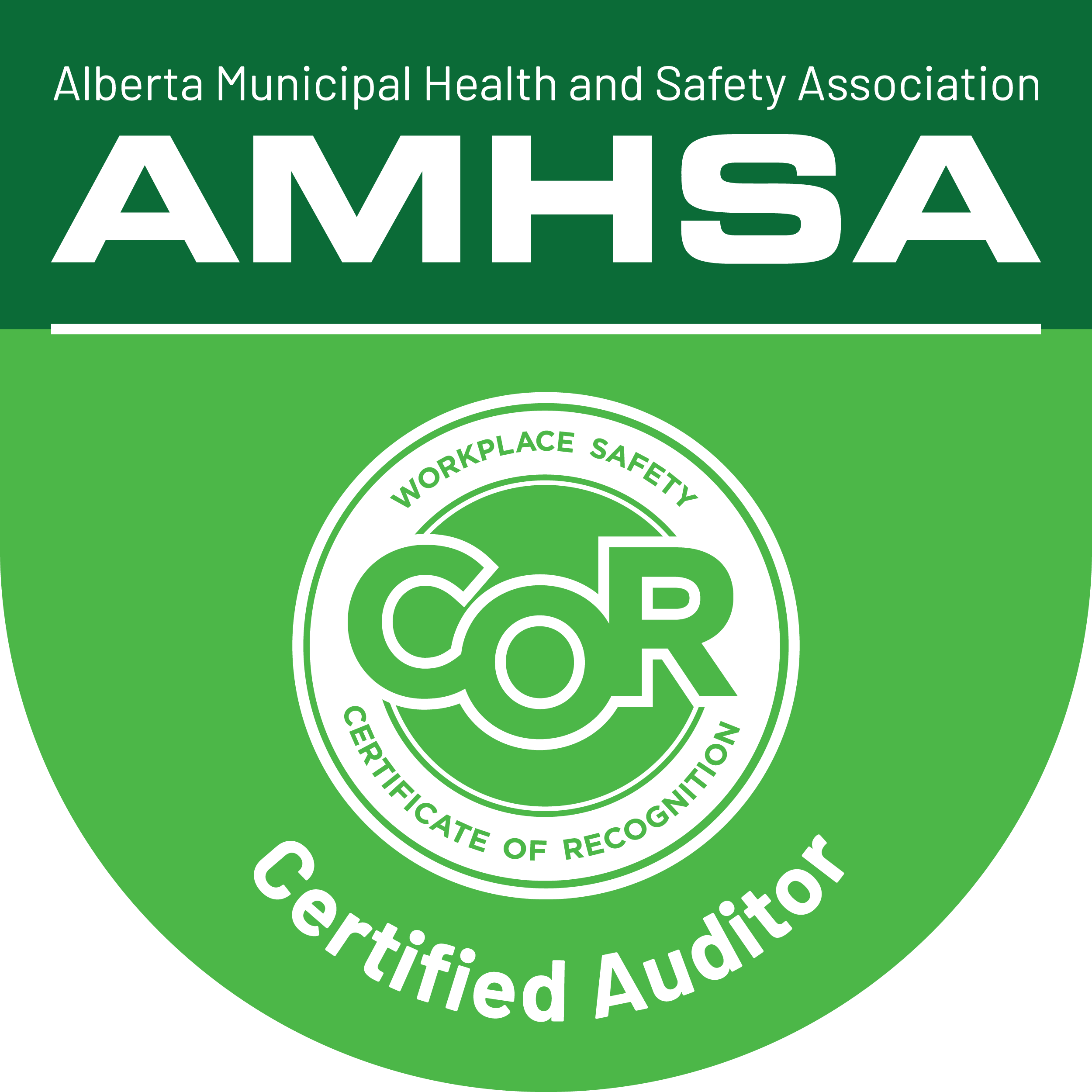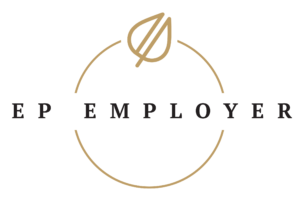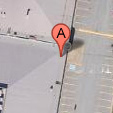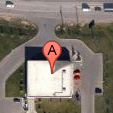- About
- Training
- eLearning
- COR & Auditing
- Resources
- Support
Large Employer COR
For the purpose of PIR/COR, a large employer is any organization with greater than 10 employees.
- Step 1: The employer registers in the PIR program with the WCB.
- Step 2: Implement a health and safety management system. AMHSA offers a two-day Health and Safety Management Systems course.
- Step 3: Once a municipality has a year’s worth of documentation of the system in action, external audits can be conducted through the peer system or by hiring an AMHSA-certified consultant.
- Step 4: The audit is submitted to AMHSA (by the auditor) for quality assurance (QA) review.
- Step 5: AMHSA reviews the audit and notifies Alberta Jobs, Economy and Northern Development of the results. Alberta Jobs, Economy and Northern Development generates and co-signs a COR for the successful organization and sends the certificate to AMHSA to be co-signed.
- Step 6: Alberta Jobs, Economy and Northern Development informs WCB – Alberta of the audit results. The employer who received the COR is then eligible for financial incentives from the WCB.
Auditor Program
AMHSA strongly recommends that all participating employers have a current staff member who has attended our Health and Safety Management Systems (HSMS) and Health and Safety Auditing courses, at a minimum. For COR-holders who conduct their own maintenance audits and participate in the external peer audit process, we recommend having multiple auditors on staff to share the workload and provide moral support. Employers may also opt to secure the services of an approved consultant auditor.
Please note that the Auditor course duration will be increasing to 2.5 days in the Fall of 2025 and an increase to the course price will also be implemented.
AUDITOR CERTIFICATION
To become certified as an AMHSA auditor, participants must successfully complete AMHSA’s auditor training program, including Health and Safety Management Systems (HSMS), Health and Safety Auditing, and a qualification audit. The purpose of the qualification audit is to assess how well the participant is able to apply the audit tool in a practical setting. AMHSA uses a quality assurance tool approved by PIR to review the participant’s work. If the QA review meets the minimum standard of 80% and all critical issues are corrected within the provided timeline, the participant becomes a certified auditor and is issued a certificate valid for three (3) years.
Effective January 1, 2025, auditor candidates (new or expired) who provide proof of active auditor status with another Alberta CP must submit a qualification audit to AMHSA within 6 months of completing the Health and Safety Auditing course. Once the qualification audit is approved through AMHSA’s Quality Assurance process, the candidate will be granted status as an AMHSA certified auditor.
ISSUING OF CREDLY DIGITAL CREDENTIALS FOR AUDITOR CERTIFICATION
AMHSA has partnered with Credly to provide you with digital versions of your credentials! Whether you have recently became certified or are a long-standing AMHSA certified auditor, optional digital badges are coming for AMHSA Auditor Credentials. In the coming weeks, you will receive an email with steps to follow to receive your badge, if your certification ends in 2026 or 2027. You will then be able to start sharing your auditor credentials.
Visit AMHSAdigitalcredentials.ca for more information and FAQ’s and see what AMHSA credentials are available now.
Each digital image contains verified metadata that describes your qualifications, and the process required to earn them. Digital badges are secure, easy to manage, verify and share online. They provide evidence of what you have done and why it’s important. Badges can be used in email signatures or digital resumes, and on social media such as LinkedIn and Facebook.
Have questions? Contact [email protected] for more information.

hsms training pre-requisite exception for amhsa auditor candidates
AMHSA may grant an exception to the requirement of having to complete the Health and Safety Management (HSMS) course, which is a pre-requisite to Health and Safety Auditing course, if 1 of the following 4 criteria are met:
- Successful completion of a course with another Alberta Certifying Partner (CP) within the last 5 years that meets the content criteria stipulated by the Partnerships Health and Safety Management Systems standard. Courses that qualify to grant this exception are listed below:
Alberta Certifying Partner (CP) Course Name Alberta Association for Safety Partnerships Guide to Develop an OHSMS Alberta Construction Safety Association Principles of Health and Safety Management Alberta Food Processors Association Health and Safety Program Building Alberta Forest Products Association Leadership in Health and Safety Alberta Safety Council Health and Safety Program Building Energy Safety Canada Safety Program Development Manufacturers’ Health & Safety Association Safety Basics - Active auditor status with another Alberta CP.
- Successful completion of a certificate or diploma program displayed on the eligible programs list on the Board of Canadian Registered Safety Professional (BCRSP) website.
- Active Canadian Registered Safety Professional (CRSP) status.
To apply for this exception please e-mail records to [email protected].
If a HSMS training pre-requisite exception is granted, the auditor candidate will be permitted to register for AMHSA’s Health and Safety Auditing course.
Auditor Certification Maintenance
To maintain auditor certification, the auditor must perform and pass QA review on two (2) audits (departmental, baseline, or certification/external) every three (3) years, as well as attend the half-day Audit Refresher course prior to their certification expiry date.
Professional Development
AMHSA’s auditor program has been pre-approved for continuing education units by the Board of Canadian Registered Safety Professionals (BCRSP). Those who successfully complete the program (Health and Safety Management Systems (HSMS), Health and Safety Auditing, and a qualification audit) are eligible for 1 CEU point under category A9 – Achieving an Additional Certification or License.
THE AUDIT CYCLE
The Certificate of Recognition (COR) is awarded to an employer that has demonstrated it has a good health and safety management system in place. The employer demonstrates this by passing a COR Certification (external) audit. The COR is valid for three (3) years, provided:
- Internal maintenance audits (or equivalent) are performed in each of the next two (2) calendar years.
- Employer fulfils its obligation to provide peer auditors as needed.
Note: If a serious incident or fatality occurs (traumatic incident), Alberta Jobs, Economy and Northern Development will conduct a review of the organization’s health and safety management system with the employer and Certifying Partner to determine if the COR is still valid. Alberta Jobs, Economy and Northern Development has the authority to revoke a COR. If revoked, the municipality will be required to conduct and pass another certification (external) audit.
The COR has an expiry date. The employer must pass another certification (external) audit in the expiry year in order to remain eligible for financial incentives. To prevent a lapse in COR status, the certification (external) audit must be performed before the expiry date.
FREQUENCY
Municipalities involved in PIR must have their system audited at least once every calendar year. To obtain a Certificate of Recognition (COR), the municipality must pass a certification (external) audit (80% minimum required). The COR is valid for three (3) years, assuming all program requirements are met. One of the program requirements is that for the next two (2) years, internal audits must be conducted. All audits must be conducted by the one (1) year anniversary date of their last audit (this provides for a full 12 months’ review of the management system). In the fourth year, another certification (external) audit is required to renew the COR.
Example:
If a municipality achieves a COR in 2021, the cycle would be as follows:
- 2021 (year 1): certification (external) audit to achieve COR
- 2022 (year 2): internal audit to maintain COR
- 2023 (year 3): internal audit to maintain COR
- 2024 (year 4): certification (external) audit to attain new COR
- 2025 (year 5): internal audit to maintain COR
All audits must be shared with the municipality audited and submitted to AMHSA.
There may be reasons to conduct health and safety management system audits more frequently. For example, a serious injury or an increase in incidents may signal a weakness in the program that needs to be investigated. Significant changes in operations or personnel may also prompt a review of the effectiveness of your system. Another example is if an audit revealed several weaknesses and an action plan was developed to address the weaknesses, another audit may be warranted once the actions are implemented.
For more information on PIR/COR, contact [email protected].
Last updated: March 13, 2025






 Email Us
Email Us